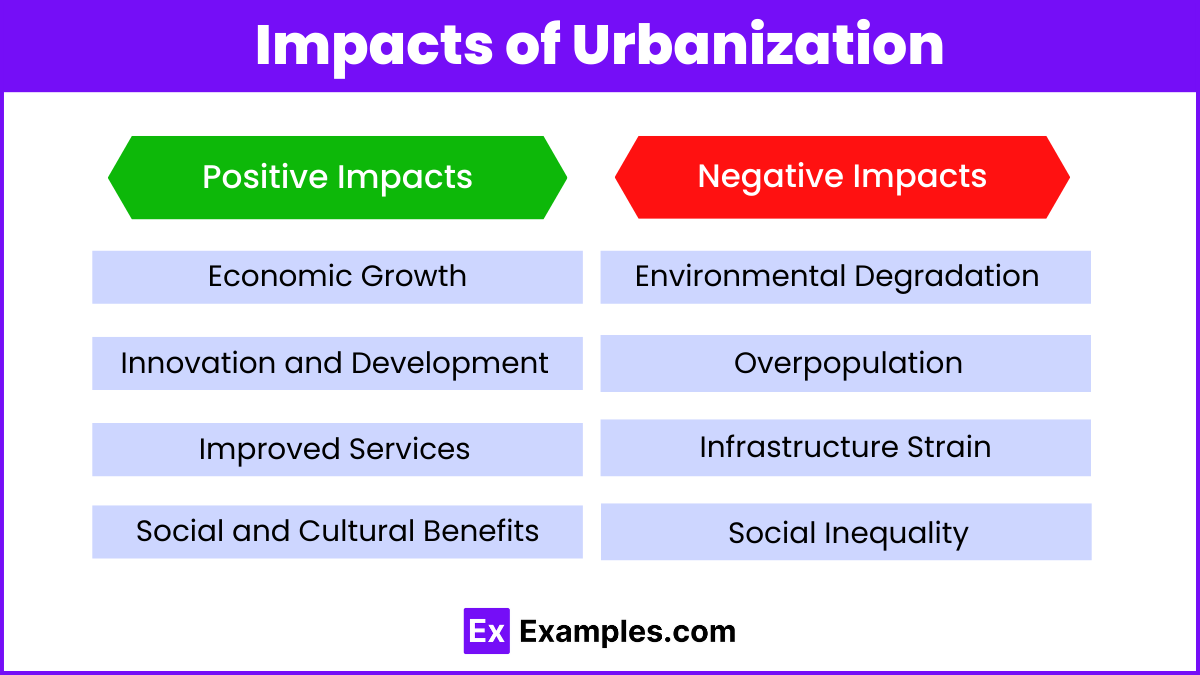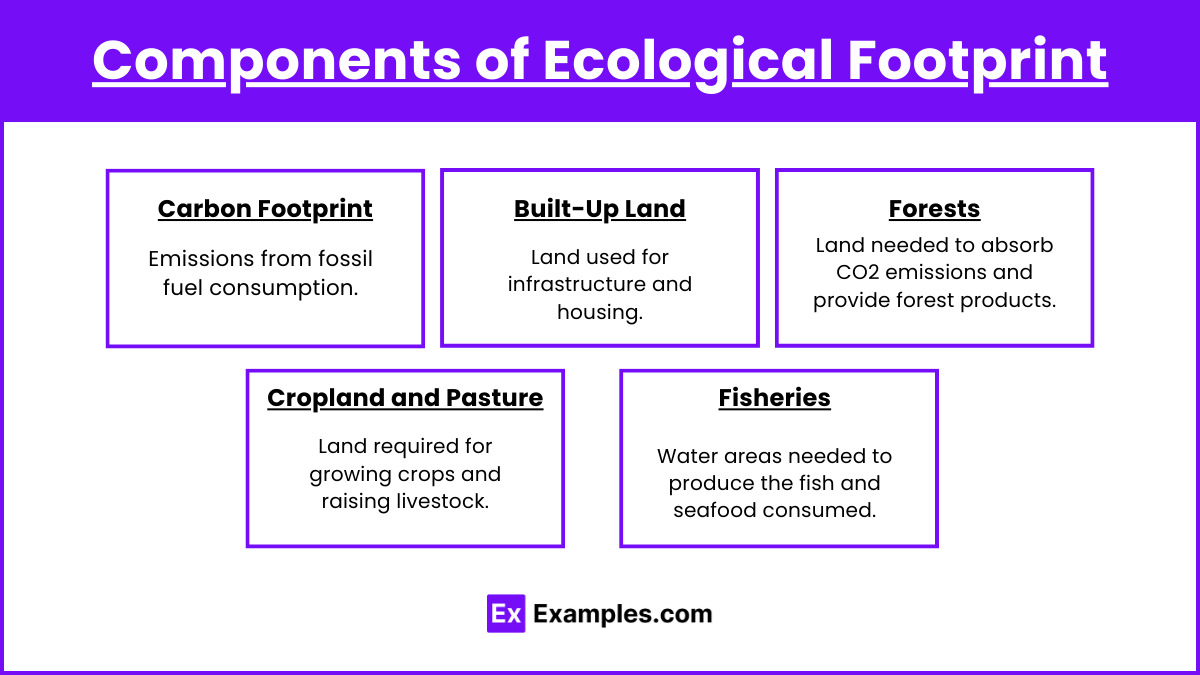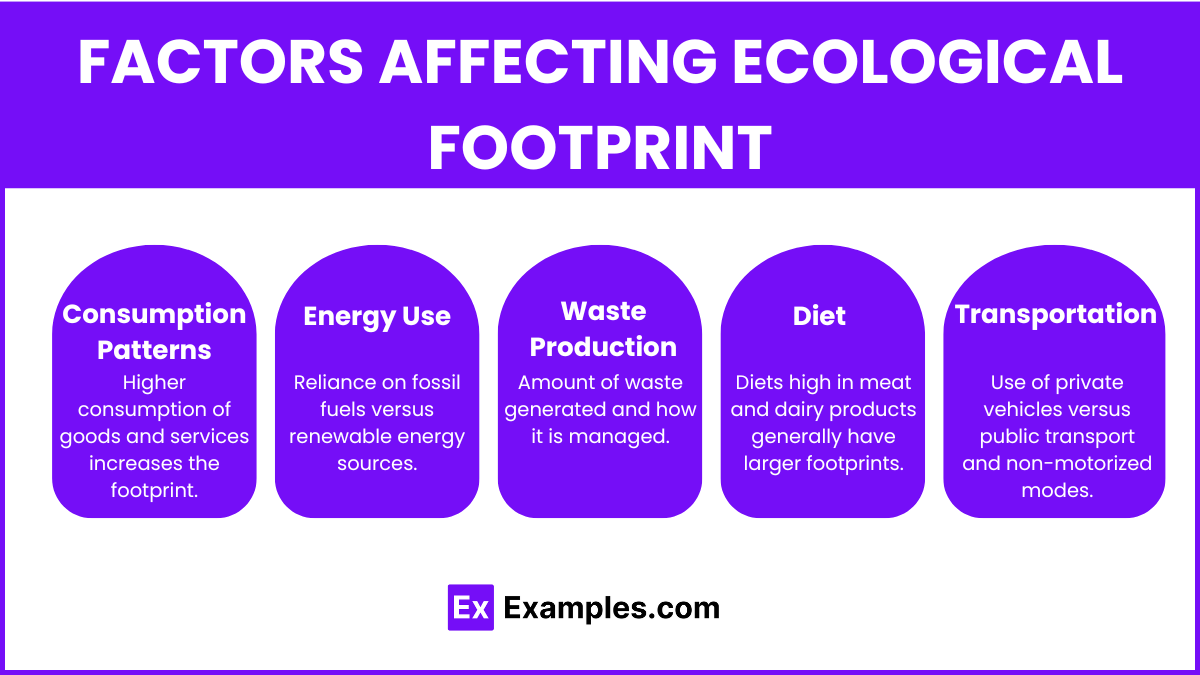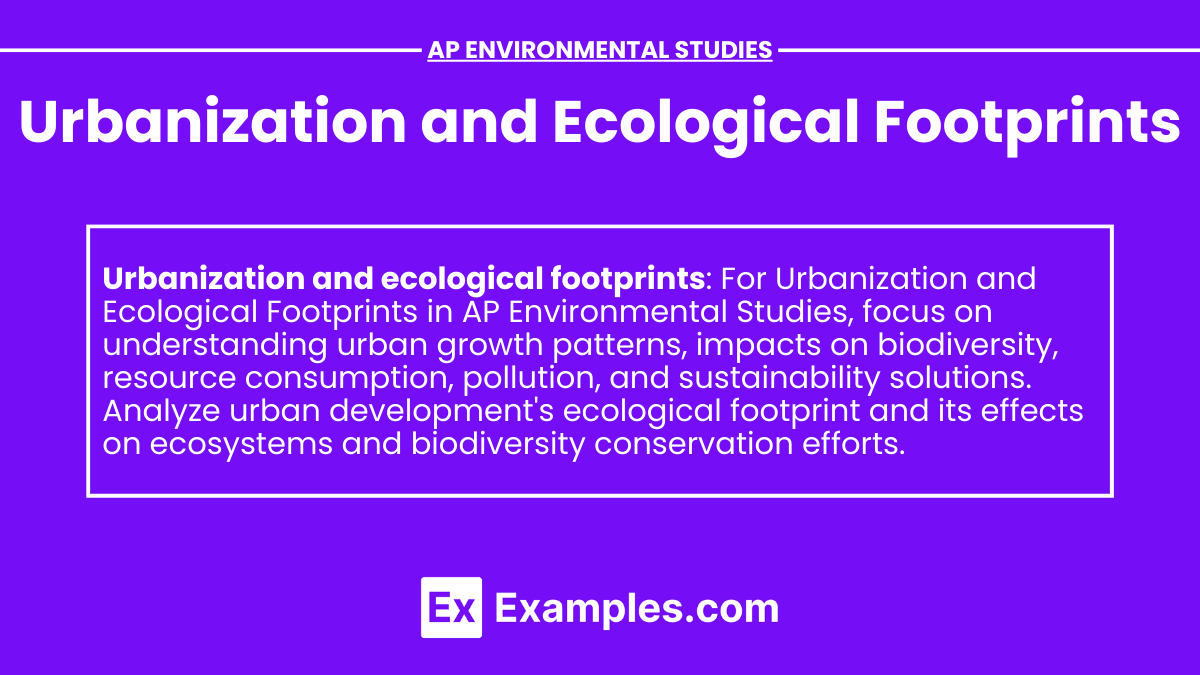In AP Environmental Studies, the study of urbanization and ecological footprints is crucial for understanding how the expansion of cities impacts the ecology and functioning of ecosystems. Urbanization often leads to habitat destruction, reduced biodiversity, and increased strain on the biosphere as natural landscapes are converted into built environments. These changes affect the balance and health of ecosystems, influencing everything from local wildlife populations to global climate patterns. Analyzing ecological footprints helps quantify the human demand on nature, illustrating the environmental cost of urban lifestyles and emphasizing the need for sustainable urban planning to mitigate these impacts.
Learning Objectives
By studying urbanization and ecological footprints, students will understand how urban growth impacts organisms, disrupts flora and fauna, and contributes to climate changes. They will learn to assess the environmental costs of urban lifestyles, quantify human demands on nature, and explore sustainable urban planning strategies. The course will emphasize the importance of balancing development with conservation to protect ecosystems and maintain biodiversity, ensuring the resilience and health of both natural and human communities.
Urbanization
Definition
Urbanization refers to the increasing number of people living in urban areas, resulting in the growth of cities and towns.
Causes of Urbanization

- Economic Opportunities: Cities offer more job opportunities, better wages, and improved standards of living.
- Education and Healthcare: Access to better educational institutions and healthcare facilities.
- Infrastructure: Improved infrastructure such as transportation, housing, and utilities.
- Social Factors: Urban areas often provide a more dynamic cultural and social environment.
Impacts of Urbanization

Positive Impacts:
- Economic Growth: Increased productivity and economic activities.
- Innovation and Development: Greater concentration of industries and services fosters innovation.
- Improved Services: Better access to services like education, healthcare, and public amenities.
- Social and Cultural Benefits: Enhancements in community diversity, cultural exchange, and social engagement.
Negative Impacts:
- Environmental Degradation: Pollution, loss of green spaces, and strain on natural resources.
- Overpopulation: Increased population density can lead to housing shortages and higher living costs.
- Infrastructure Strain: Overburdened transportation systems, water supply, and waste management.
- Social Inequality: Disparities between different socioeconomic groups can become more pronounced.
Urban Sprawl
- The uncontrolled expansion of urban areas into rural land.
- Leads to habitat destruction, increased vehicular emissions, and higher infrastructure costs.
Sustainable Urbanization
- Green Buildings: Using sustainable materials and energy-efficient designs.
- Public Transportation: Enhancing public transport to reduce reliance on private vehicles.
- Urban Planning: Designing cities to include green spaces, sustainable waste management, and efficient use of resources.
- Community Engagement: Involving local communities in planning and decision-making processes.
Ecological Footprints
Definition: An ecological footprint measures the amount of land and water area required to sustain the consumption patterns and absorb the wastes of an individual, community, or nation.
Components of Ecological Footprint

- Carbon Footprint: Emissions from fossil fuel consumption.
- Built-Up Land: Land used for infrastructure and housing.
- Forests: Land needed to absorb CO2 emissions and provide forest products.
- Cropland and Pasture: Land required for growing crops and raising livestock.
- Fisheries: Water areas needed to produce the fish and seafood consumed.
Factors Affecting Ecological Footprint

- Consumption Patterns: Higher consumption of goods and services increases the footprint.
- Energy Use: Reliance on fossil fuels versus renewable energy sources.
- Waste Production: Amount of waste generated and how it is managed.
- Diet: Diets high in meat and dairy products generally have larger footprints.
- Transportation: Use of private vehicles versus public transport and non-motorized modes.
Measuring Ecological Footprint
- Calculated in global hectares (gha), representing the biological productivity of an average hectare of land.
- Helps assess whether the human demand on nature exceeds the Earth’s capacity to regenerate.
Reducing Ecological Footprint
- Energy Efficiency: Reducing energy consumption through efficient appliances and practices.
- Sustainable Diets: Shifting towards plant-based diets and reducing food waste.
- Waste Reduction: Recycling, composting, and reducing single-use plastics.
- Sustainable Transportation: Using public transportation, cycling, and walking.
- Conservation Efforts: Protecting natural habitats and promoting biodiversity.
Connection Between Urbanization and Ecological Footprints
- Urban areas typically have higher per capita ecological footprints due to higher consumption levels.
- However, dense urban living can also reduce footprints through efficient resource use and public services.
Case Studies
- Smart Cities: Cities like Copenhagen and Singapore implementing smart technologies for sustainability.
- Urban Agriculture: Community gardens and rooftop farms reducing food miles and enhancing local food security.
- Green Initiatives: Cities adopting policies for renewable energy, green spaces, and sustainable transportation (e.g., bike-sharing programs).


